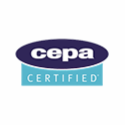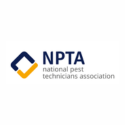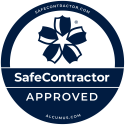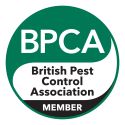If you suspect rats are in your building it is important to contact us quickly. A female rat can have a litter every six weeks with each consisting of 6-8 offspring. The females from the new brood will be ready to produce their own letter from as soon as five weeks after birth.
Rats are a public health risk as they mark their territory by urinating everywhere they go. They can carry diseases, which can spread through their urine or from coming into contact with food preparation areas. The diseases include: Salmonella, Listeria, Toxoplasma gondii, Hantavirus and Leptospirosis (often referred to as Weil’s disease).
It is important to correctly identify a rat from a mouse, mole, vole or shrew. To the untrained eye, a large mouse is easily confused for a rat, or it is common to think a small rat is a mouse. Correct identification is important, as the approach to treat each species is different.
The most common rat in Britain is the Rattus Norvegicus, also known as the Brown Rat or Common Rat. It will live wherever it finds a good source of food, water and shelter. In buildings they are often found in lofts, cupboards, wall cavities or under floorboards. They tend to seek out warmer living areas during autumn and winter.
You may hear scuttling noises as the rats move around behind kitchen units, your loft or wall cavities. Other tell-tale signs of a rat infestation are, dark pellet-shaped droppings, which look like large grains of rice. Rats will gnaw to keep their teeth in good condition. You may find, they have bitten or chewed electrical cables, wood, plastic, brick, lead pipes, or ripped food cartons. You may also spot, footprints, tail marks or smears caused by their fur rubbing on the walls.
If you notice any of these signs please get in touch with us straightaway.
All the Protex Pest Control Technicians are qualified to the stringent standards laid down by the British Pest Control Association (BPCA). We are trained to control rats and have access to effective products and tools that are not available to the public.
When you contact us, we will arrange a convenient time slot for one of our Protex Pest Control experts to visit your property. They will thoroughly assess your premises to identify the problem. You will then receive a personalised treatment plan to deal with your rat problem. If necessary, the Protex Pest Control technician will start treatment immediately. All our treatments are professional, safe and effective.
We will also seek out all the possible entry points to prevent any future infestations. These will include doors, windows, cupboards, storage rooms and cracks in walls.
Read our top tips to stop rats from entering your property here.
The safest option is to contact a pest control professional. You will find remedies sold online or in DIY stores, but these should be used with caution. They often contain a poison which the rat will eat. It will usually take effect when the rat has returned to its nest. As a result, it will die in your home and if not detected quickly, will start to decompose and smell.
If not placed correctly, the poisons can also pose a danger to children, pets and other wildlife.
When we visit your property, we will know, where, and when to apply treatments safely. Our technicians will also know how long to wait for the treatments to take effect and how to find any captured rats.
However there are some things you can do to help keep the rats away:
Keep your home clean and tidy – Rats are attracted to food and clutter, so make sure to clean up any spills or crumbs immediately.
Check for cracks or holes – Rats can squeeze through very small openings in brickwork, airbricks and pipes, so check around your home and ensure any gaps are sealed carefully to prevent the rats from entering.
Property and landowners should take all the necessary preventative measures to prevent rats from getting into the property. The Prevention of Damage by Pests Act 1949 and the Food Safety Act 1990 are legal requirements. Failure to comply with them can lead to hefty fines or even imprisonment. However, there may be situations where the tenant is liable.
Read more here – Who is responsible for a pest infestation in a rented property? The landlord or the tenant?






